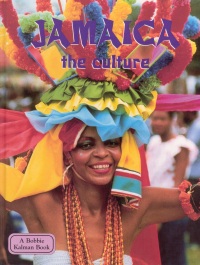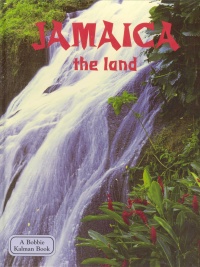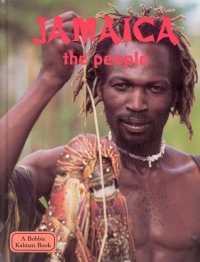| ________________
CM . . .
. Volume X Number 20 . . . . June 4, 2004
excerpt:
Part of the “Land, People and Culture” series, these three books, averaging 11 chapters each, provide information on a wide variety of topics. Though there is some overlap amongst the titles, the series is an excellent resource for students who are studying another part of the world and its culture. Each book has a table of contents, an index and a glossary as well as wonderful, abundant photographs and maps which not only suit the text but also bring the information to life. Topics in The Land include the geographical areas and their origins, the climate, economy, cities and towns, transportation and wildlife. Readers will learn about unusual animals, fruits and vegetables which are relatively unknown in North America. More than half of the title about the people is devoted to the history of Jamaica from its discovery in 650 A.D. by the Taino of South America to the arrival of the Europeans and Jamaica’s struggle for independence. The remainder of the book features the variety of ethnic groups which make up Jamaica’s population, with specific information about the Maroons, descendants of African people, who came to the country as slaves or indentured labourers. For the most part, the Maroons still embrace their traditional way of living. Other topics covered include family celebrations, island dishes and their preparation and some of the sports and pastimes which the people enjoy. The Culture explains the influence of ancestry and religion on the people. Various festivals, both religious and secular, are highlighted. Jamaican arts, crafts, architecture, music, language (Jamaican Creole) and literature are also featured in this title. Long a popular tourist destination, Jamaica has far more to offer than sunny beaches. These books provide a different perspective with an emphasis on the rich culture of the Jamaican people. Highly Recommended. Gail Hamilton is a teacher-librarian at Bird’s Hill School in East St. Paul, MB.
To comment
on this title or this review, send mail to cm@umanitoba.ca.
Copyright © the Manitoba Library Association. Reproduction for personal
use is permitted only if this copyright notice is maintained. Any
other reproduction is prohibited without permission.
NEXT REVIEW |
TABLE OF CONTENTS FOR THIS ISSUE
- June 4, 2004.
AUTHORS |
TITLES |
MEDIA REVIEWS |
PROFILES |
BACK ISSUES |
SEARCH |
CMARCHIVE |
HOME |


